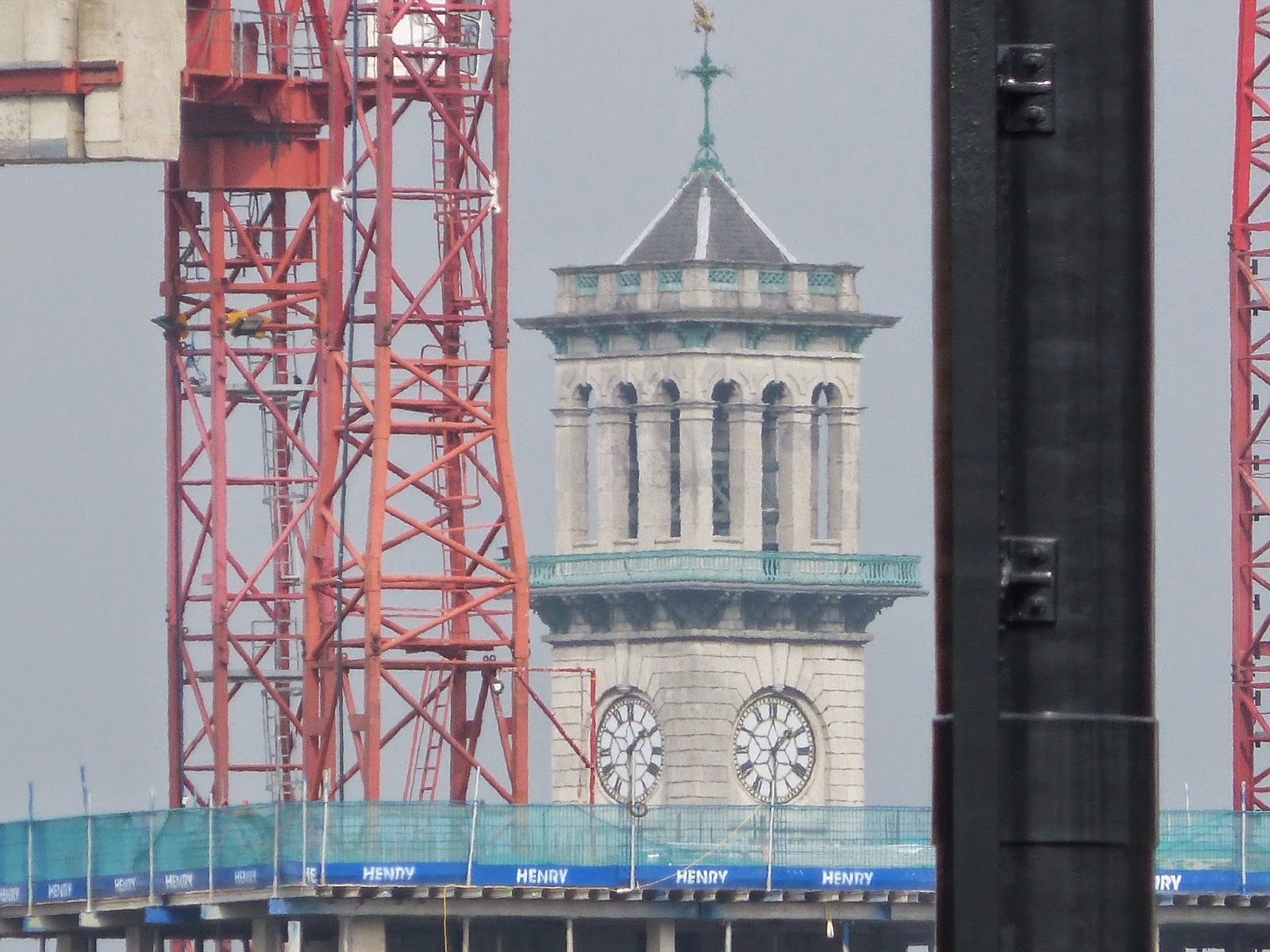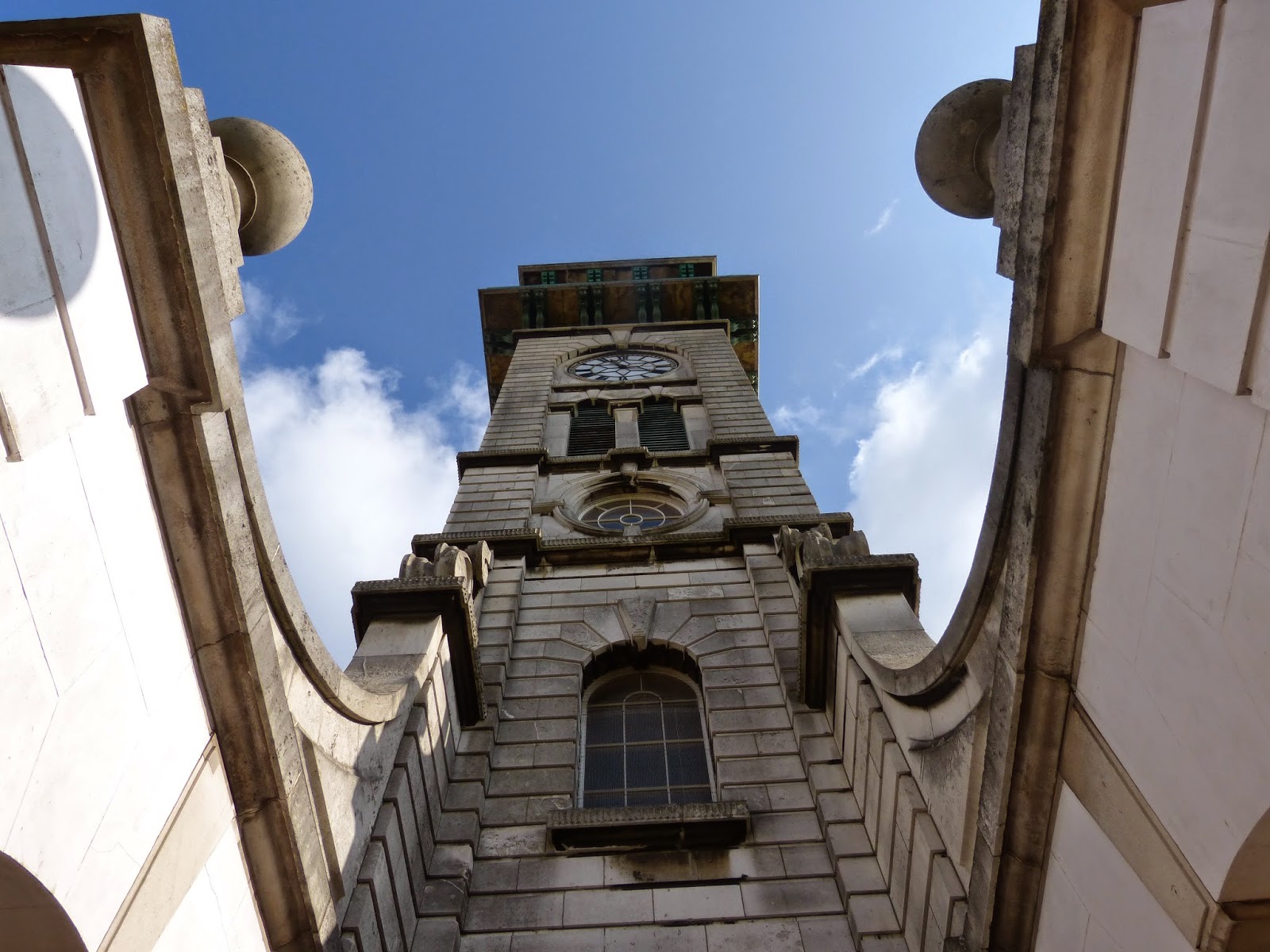One of the highlights was the Caledonian Park Clock Tower. Interestingly, this could be spotted from two other buildings visited - firstly from 5 Pancras Square, a brand new office and leisure complex for Camden:
...and also from the Victorian Waterpoint which now belongs to the St Pancras Cruising Club (as in canal boats), glimpse through the cranes and gasholders on the redeveloping railway lines north of Kings Cross:
The clock tower is located in Caledonian Park. The area was redeveloped in the 1850s to become the principal livestock market for London, replacing Smithfields.The size of the market was huge, and in 1862 it handled 300,000 bullocks, 1.5 million sheep (that's over 4,000 per day), 28,000 calves and 29,000 pigs.
The clock tower was one of the key features of the market, and one of the few buildings that remain today.
The tower is 45.6 metres tall and clad in Portland stone. Further details of the clock tower, the Caledonian cattle market and the previous and more recent uses of the site can be found in the publication "Caledonian Park and its surroundings" published by the Islington Publishing Society for the Caledonian Park Friends Group (www.caledonianparkfriendsgroup.org).
A sense of the size of the tower can be gained from the picture below, showing visitors on the belfry balcony.
Time now to go inside. The start of the journey up the tower is by an easy spiral staircase, but the ascent soon requires negotiating steep ladder-like stairs.
As you go up you see the huge weights...
...and the enormous pendulum (for a sense of scale look at the pair of legs on the ladder to the left of the pendulum).
And so to the clock itself, manufactured by John Moore and Sons.
On the next floor up is the fantastic room containing the four dials - it is always fascinating to see these from the inside.
I don't know how big these dials are, but again the human scale comparison is shown in the photo below.
Up once more, and we come to the belfry. The bells were cast by C&G Mears Founders, now known as the Whitechapel Bell Foundry.
And the view from the balcony around the belfry (with its scarily low railings) is spectacular. The picture below show the view towards the cluster of tall buildings in the City of London. The grassy area and the buildings immediately beyond it were originally all part of the cattle market.
And finally just some further pictures taken inside.
Islington Council are currently holding a consultation (open until 5 October 2014) on repairs and improvements to the tower (www.islington.gov.uk/callyclocktower).





























No comments:
Post a Comment